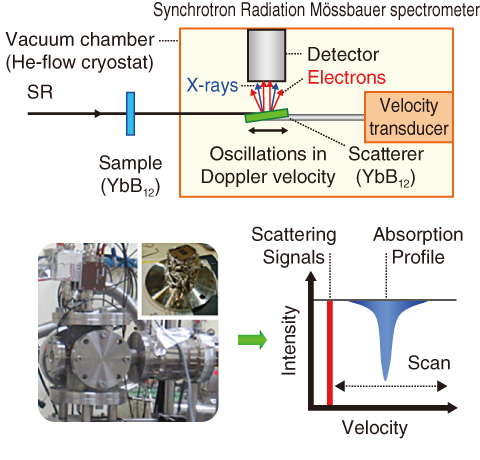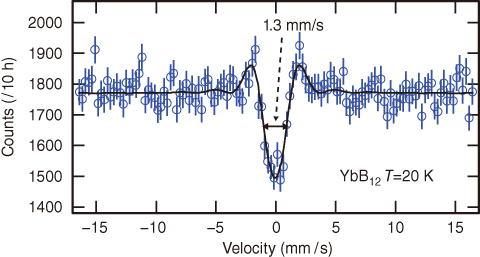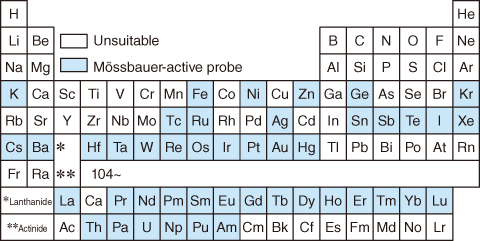
Fig.5-19 Schematic of the SRMS spectrometer (upper panel), an outside view of the APD detector placed in a vacuum chamber (lower left panel), and scheme of the energy scan process for obtaining the Mössbauer spectrum (lower right panel)

Fig.5-20 174Yb Mössbauer spectrum

Fig.5-21 Elements highlighted in light blue are suitable for Mössbauer spectroscopy
Synchrotron radiation Mössbauer spectroscopy (SRMS) is a powerful tool used in diverse research areas. SRMS provides information on magnetism, valences, crystal fields, and electron densities by exploiting the hyperfine interactions between the nucleus and its surrounding electrons. So far, the spectrum has been measured by detecting the fluorescent X-rays and γ-rays released after nuclear resonant absorption while largely disregarding the concurrent internal conversion electrons (ICEs). To effectively utilize the ICEs, we developed an advanced SRMS spectrometer that detects the ICEs along with the X-rays and γ-rays. The device is constructed from a windowless avalanche photodiode detector and a vacuum chamber with a helium (He) gas-flow cryostat (Fig.5-19). In this system, the synchrotron radiation (SR) X-rays transmitted through the target sample (transmitter) are resonantly scattered by the reference sample (scatterer). The resulting spectrum is acquired by counting the delayed scattering signals from the resonantly excited nuclei in the scatterer, and plotting them as a function of the Doppler velocity.
As a feasibility study, we measured the Mössbauer spectrum of the 76.5 keV excited state of 174Yb, which exhibits a short lifetime (τ = 2.58 ns). The experiment was conducted at the undulator beamlines BL11XU and BL09XU of SPring-8. YbB12 powder samples were used as both transmitter and scatterer. The counting rate (measurement efficiency) of the constructed device was up to 500% higher than that of the previous detection system, and the spectrum was obtained within 10 h. A clear absorption profile is shown in Fig.5-20. The line width is approximately 1.3 mm/s, sufficient to determine the 174Yb-hyperfine parameters.
In summary, a novel system for acquiring SRMS was successfully developed at SPring-8. The improved measurement efficiency enabled the first observation of the 174Yb SR-Mössbauer spectrum at 76.5 keV. Clearly, the developed device will enable SRMS studies of many other Mössbauer-active nuclides (Fig.5-21). Moreover, a high-brilliance SR source offers new research possibilities in transmission and scattering Mössbauer experiments. We believe that SR-based Mössbauer spectroscopy has entered a new stage in both fundamental and practical studies.
The present study was partly supported by Japan Society for the Promotion of Science (JSPS) KAKENHI Grant-in-Aid for Scientific Research (S) (No.24221005) and a Grant-in-Aid for Research Activity Start-up (No.24810014).